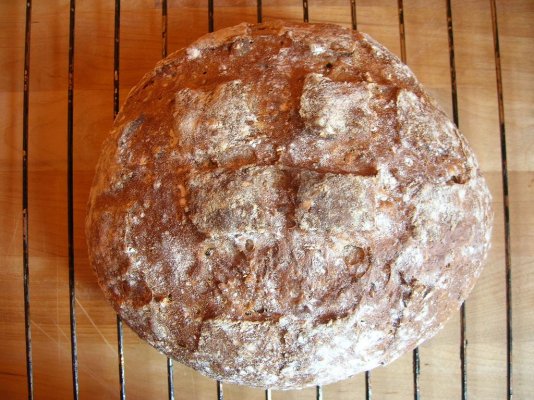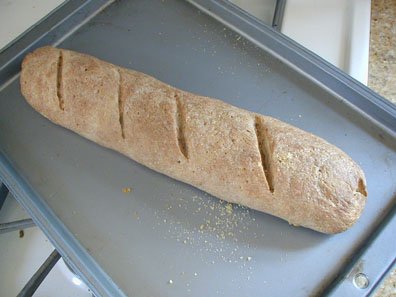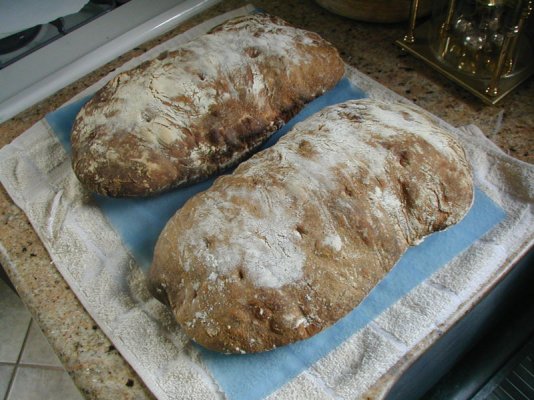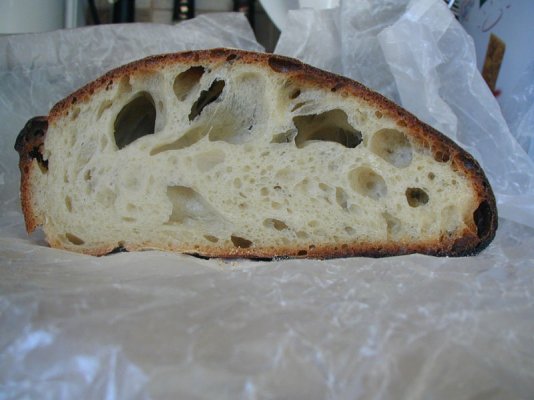I made the biga this morning using your proportions. It seemed to stiff to me, but I let it rise until 8 tonight. I added the rest of the ingredients and put it in the fridge until the morning, so we shall see. The one change I made was that some of the flour is whole wheat because I ran out of white. i found instruructions and recipes in a book called the Bread Bible by Rose Levy Beranbaum:
BIGA
A biga, an Italian pre-ferment, is close to the consistency of bread dough (from 50 to 78.7 percent water [hydration]). It is usually mixed at least 6 to 24 hours ahead and used within 3 days. Because of its stiff consistency, it is the strongest (in terms of gluten) of the pre-ferments and is particularly useful in breads with a high water content, such as ciabatta, to strengthen the network of gluten. If a biga overmatures and deflates, the bread will have smaller holes. If the biga is refrigerated for much past 3 days, it will become too acidic, weakening the gluten and adding a very sour flavor. It can, however, be frozen for up to 3 months; it will lose some yeast activity but will still contribute complexity to the flavor of the bread. What I most love about a biga is the flexibility of time it gives you. It takes only a few minutes to mix, and then, any time within the next 3 days, all you add is the rest of the flour, a little yeast, and the salt, and you're well on your way to fantastic bread! My biga is fairly soft, so it integrates easily into the rest of the dough. If your ' biga is stiffer, cut it into a few pieces before adding it.
To make a biga: Use at least one-third the volume of water used in the recipe (e.g., the recipe calls for 1 cup water, use 1/3 cup for the biga) and double its volume in flour (in this case, 2/3 cup). This will be about 30 percent of the total amount of flour, but it's fine to use up to 55 percent of the total amount of flour, which will add more strength to the dough (also of course adjusting the volume of water to fall within the 55 to 78.7 percent of the flour ratio). For 1/2 to 2/3 cup flour, use 1/16 teaspoon of the yeast in the recipe in the biga. If you are using a total of 1 cup to 1 1/3 cups flour in the biga, double the yeast used in the biga (1/8 teaspoon).
If time does not allow for a minimum of 8 hours fermentation for the biga, double the yeast given in the recipe for the biga (be sure to subtract the appropriate amount from the dough) and allow it to stand for at least 2 hours, or until at least doubled in volume. Stir it down, and use it or store in the refrigerator or freezer.
I'm sure the biga I made was way too stiff using your proportions.
 I still want to shape it and bake in the oven.
I still want to shape it and bake in the oven.



